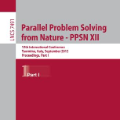A decent number of lower bounds for non-elitist population-based evolutionary algorithms has been shown by now. Most of them are technically demanding due to the (hard to avoid) use of negative drift theorems -- general results which translate an expected progress away from the target into a high hitting time. We propose a simple negative drift theorem for multiplicative drift scenarios and show that it can simplify existing analyses. We discuss in more detail Lehre's (PPSN 2010) \emph{negative drift in populations} method, one of the most general tools to prove lower bounds on the runtime of non-elitist mutation-based evolutionary algorithms for discrete search spaces. Together with other arguments, we obtain an alternative and simpler proof, which also strengthens and simplifies this method. In particular, now only three of the five technical conditions of the previous result have to be verified. The lower bounds we obtain are explicit instead of only asymptotic. This allows to compute concrete lower bounds for concrete algorithms, but also enables us to show that super-polynomial runtimes appear already when the reproduction rate is only a $(1 - \omega(n^{-1/2}))$ factor below the threshold. As one particular result, we apply this method and a novel domination argument to show an exponential lower bound for the runtime of the mutation-only simple GA on \onemax for arbitrary population size.
翻译:现在已经展示了非扩张性人口基进化算法的更低范围。 大部分这些算法之所以在技术上要求较高, 是因为( 很难避免) 使用负漂移定理法( 通常的结果), 将目标的预期进展从目标转换为高打击时间。 我们提议了一个简单的负漂移定理法, 用于多复制性漂移假设, 并显示它可以简化现有的分析。 我们更详细地讨论莱赫雷的( PPSN 2010) / emph{ 负人口流} 方法, 一种最普通的工具, 证明非扩张性突变变变变定理法在运行时的下限( 很难避免 ) 。 与其它参数一起, 我们获得了一种替代的更简单的证据, 这也会加强和简化这一方法。 特别是, 现在, 前一次结果的五个技术条件中只有三个需要核实。 我们得到的下限是明确的, 而不是仅仅是不精确的。 这样可以对具体算法的下限进行具体的下限, 但也使我们能够显示超极性Asomimal- 2 开始值的极限标值。




